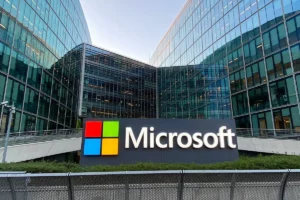Surf Internet, an Indiana-based telecom company, has ambitiously pledged $35 million towards expanding high-speed internet access to the state’s rural areas over the next few years. However, Surf says closing the rural digital divide fully would require an additional $100 million in public funding over the next five years.
Internet connectivity has become as vital for socioeconomic participation today as electricity was in the 20th century. Students need broadband to access remote learning resources. Job seekers and small businesses need it to tap into the digital economy. Telehealth, precision agriculture, government services, and even social connections depend more and more on reliable, high-speed internet.
And so Surf Internet’s efforts are welcome and necessary. The $35 million would expand Surf’s network of broadband cables and towers into additional rural counties, leveraging federal and private investments. Surf has already extended connectivity to certain areas of northwest Indiana since being founded in 1998.

Why Broadband Access is Essential in Rural Areas
Rural and small-town Americans are just as deserving of full economic and social inclusion as urban dwellers. But a digital divide persists, as identified by the following key metrics:
- Less than two-thirds of rural residents have home broadband access versus 80% of urbanites.
- Rural internet speeds lag behind, despite paying similar monthly fees.
- Over a quarter of Indiana’s rural population lacks access to even basic fixed broadband, compared to 2% of residents in urban communities.
These connectivity gaps directly hurt rural opportunities and livelihoods in the following key areas:
Education
As schools transition learning resources and activities online in hybrid or fully-remote formats, students without home broadband access or with unreliable, slow connectivity struggle to keep up.
This worsens educational outcomes and development, continuing cycles of limited opportunity into adulthood. Rural students deserve the same remote learning capabilities as students in connected communities.
Jobs and Income
Reliable broadband empowers rural entrepreneurs and small business owners to reach broader customer bases through digital channels. It permits remote work opportunities for rural residents that allow them to earn urban-level incomes.
Those without connectivity face constrained income potential and job options, hampering rural community growth.
Healthcare
With advanced telehealth platforms and internet-enabled health devices, broadband can literally save rural lives by connecting patients instantly with medical expertise. Crucially, it also provides access to specialized expertise typically unavailable in rural clinics.
Those lacking connectivity miss out on potentially life-changing healthcare options.

Details of Surf Internet’s Rural Expansion Plans
Surf Internet has already extended broadband access to certain rural counties, including areas of northwest Indiana. Connecting these communities has demonstrated to Surf firsthand how transformative internet access can be.
Now, leveraging $35 million in pledged private capital, Surf Internet aims to continue expanding service over the next 3-5 years. The current plan focuses on upgrading existing infrastructure as well as building new open-access fiber and wireless networks through rural areas currently stuck on the wrong side of the digital divide.
This $35 million would finance perhaps 35-40% of the required investment for achieving fully equitable rural access. Surf thus has requested $100 million in matching state subsidies over five years to close broadband gaps in unserved rural counties.
Granting this public funding remains contentious; proponents view connectivity as a right with immense socioeconomic benefits, while critics cite the strain on state budgets and question the specifics of Surf’s proposed expansion plan.
The Role of State Government in Closing Connectivity Gaps
Ensuring ubiquitous, affordable broadband sits among state governments’ most pressing duties in enabling socioeconomic inclusion. Strategies to close stubborn digital divides encompass both public subsidies and effective policymaking.
1. Subsidizing Infrastructure Deployment
Through programs like Indiana’s rural broadband grant fund, state subsidies empower internet service providers to extend wired and wireless connectivity affordably into sparsely-populated counties where sparse customer bases would otherwise deter private investment.
Qualified providers like Surf Internet apply state subsidies towards financing initial capital projects. Ongoing access fees from newly-connected customers then sustain networks over decades-long useful lives.
2. Enforcing Service Obligations
State regulators focus on consumer protections and service standards via agency oversight over ISPs. This curbs anti-competitive behavior from companies accepting public subsidies who might otherwise carve out local monopolies or exclusivity arrangements post-deployment.
Updated policies should additionally enforce net neutrality principles on ISPs benefitting from public backing, so end-user internet speeds and access remain free of corporate interference.

What’s At Stake for Rural Indiana Families?
The ramifications from debates around public broadband investment extend far beyond abstract ideologies or political posturing. Reliable, high-speed connectivity empowers socioeconomic inclusion for rural and small-town Hoosiers:
- Students can access remote learning to unlock their full academic potential, regardless of geography.
- Entrepreneurs can turn side hustles into thriving local businesses reaching regional customer bases online.
- Workers gain opportunities for supplementary or even full-time remote work with competitive wages.
- Patients access specialized telehealth expertise that improves health outcomes.
- Communities unlock public interest services, digital civic engagement, and residents’ ability to build social connections.
Connectivity thus serves as a catalyst for reversing trends of declining opportunity in rural areas. Surf Internet’s willingness to partner with state government in pursuit of digital equity for all Indiana residents represents an opportunity that policymakers would be remiss to ignore.
The outcome of current rural broadband funding debates will shape quality of life and inclusion for heartland families for decades to come. Indiana must invest ambitiously and wisely for an inclusive, digitally-powered future.
















Add Comment